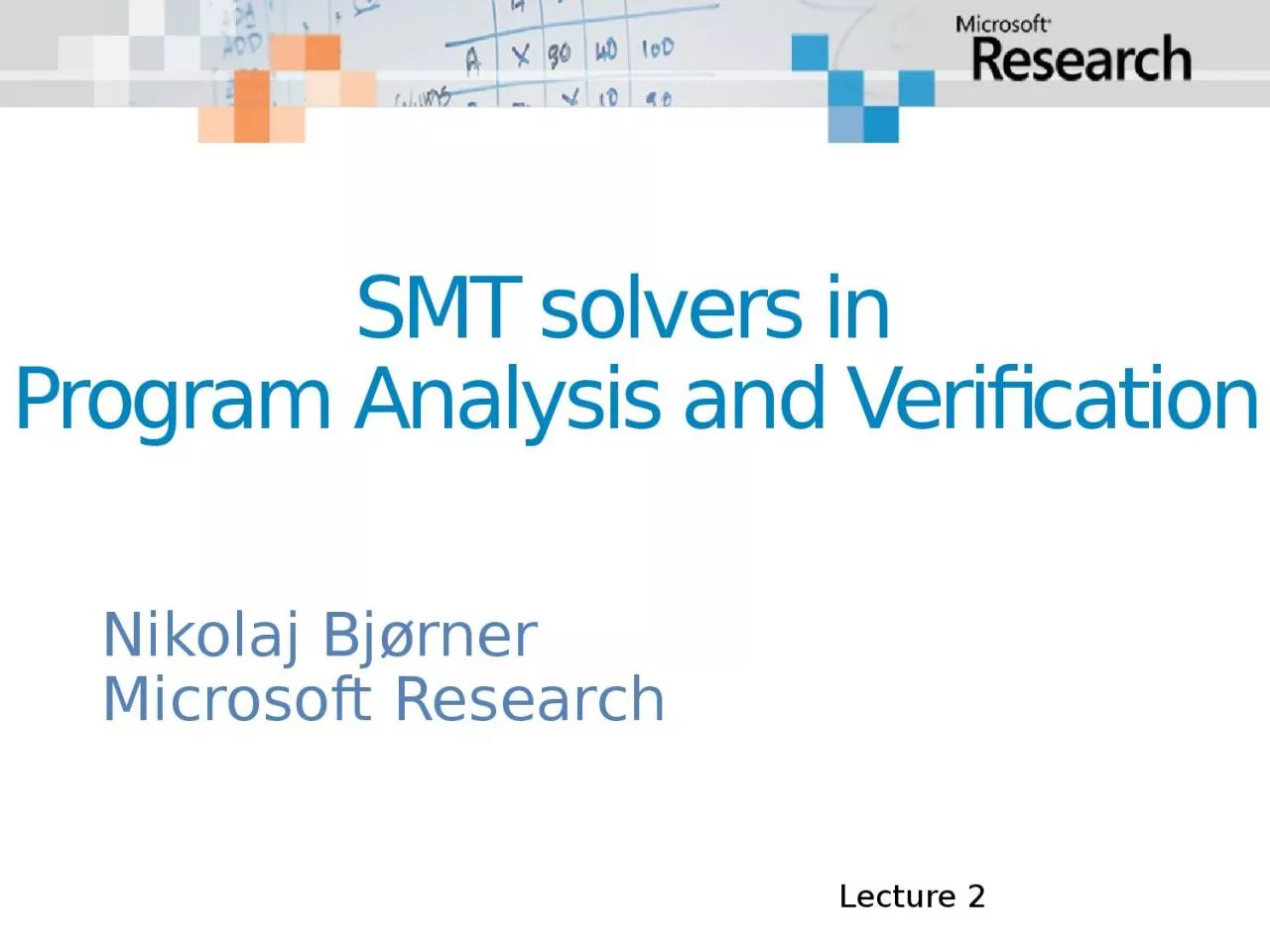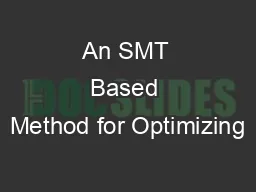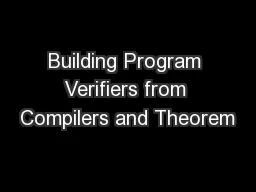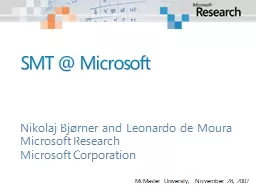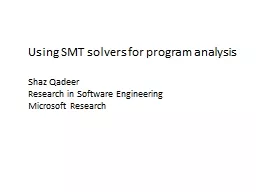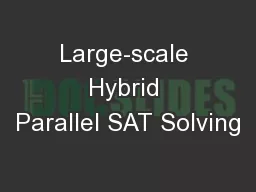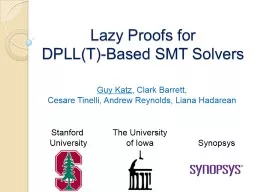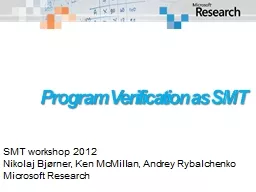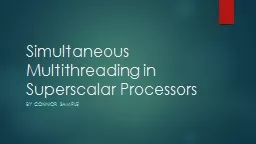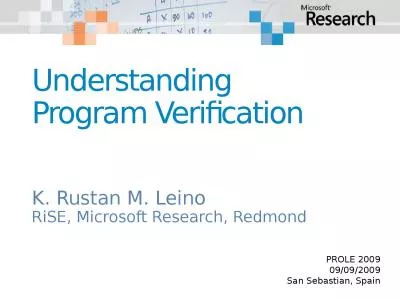PPT-SMT solvers in Program Analysis and Verification
Author : felicity | Published Date : 2023-06-22
Nikolaj Bj ø rner Microsoft Research Lecture 2 Overview of the lectures Day Topics Lab 1 Overview of SMT and applications SAT solving Z3 Encoding combinatorial
Presentation Embed Code
Download Presentation
Download Presentation The PPT/PDF document "SMT solvers in Program Analysis and Ver..." is the property of its rightful owner. Permission is granted to download and print the materials on this website for personal, non-commercial use only, and to display it on your personal computer provided you do not modify the materials and that you retain all copyright notices contained in the materials. By downloading content from our website, you accept the terms of this agreement.
SMT solvers in Program Analysis and Verification: Transcript
Download Rules Of Document
"SMT solvers in Program Analysis and Verification"The content belongs to its owner. You may download and print it for personal use, without modification, and keep all copyright notices. By downloading, you agree to these terms.
Related Documents

